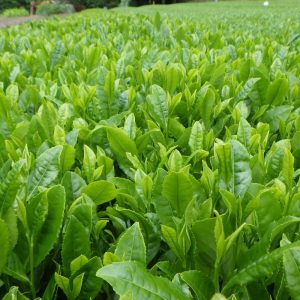
Yamanoibuki (山の息吹) means “mountain breath”.
It’s an early budding cultivar meant for sencha production.
History of Yamanoibuki
In 1975 at present day Kawanehon town in Shizuoka prefecture, specimens were taken from a field of tea plants that were born from Yabukita seeds.
The best seedling was selected, and it passed tests done in 1977 and 1985.
As a result, it was considered a high quality cultivar and named Yamanoibuki in 1997. That year it was registered under the Seed and seedling law.
In 2001, its use in Shizuoka prefectured was encouraged.
Characteristics of Yamanoibuki
Yamanoibuki can be picked 4 days earlier than Yabukita.
Its mature leaves are smaller than Yabukita, have an elliptical shape, and a green color with medium luster.
The young leaves have a light green color.
Its cuttings root easily and grow well.
This cultivar has medium resistance to anthracnose, but it is weak against the gray blight and the bacterial shoot blight.
It’s also somewhat susceptible to the white peach scale.
Yamanoibuki can endure the cold weather as good as Yabukita, and offers the same yield at harvest.
It has a relatively high amount of amino acids and a low amount of catechins.
As a sencha, its leaves can be rolled tightly and have a clear yellow-green color.
Its aroma feels mild, with refreshing and vegetal notes. It feels much different from Yabukita.
The liquor is green, with a a deep umami taste and low astringency.
